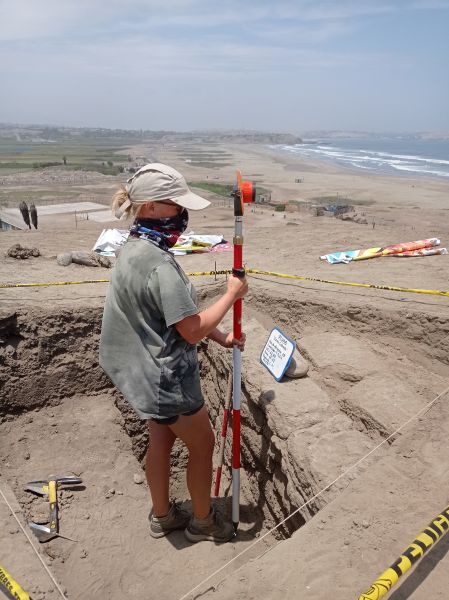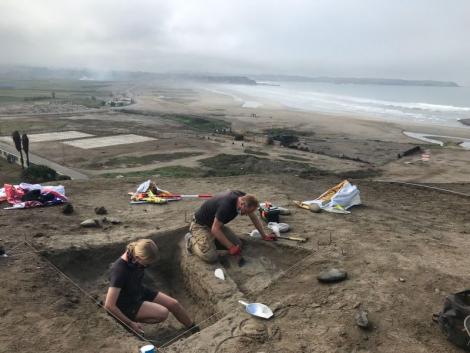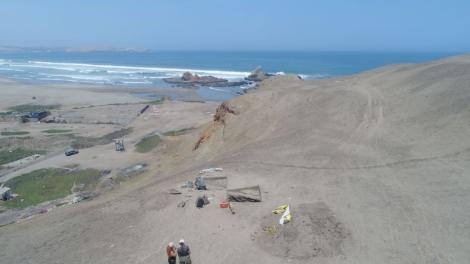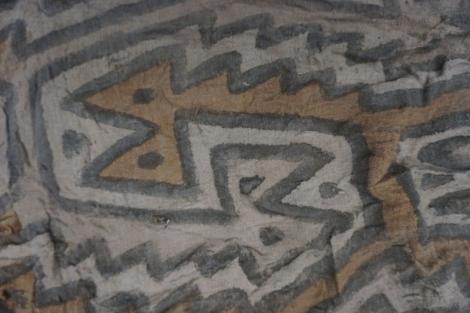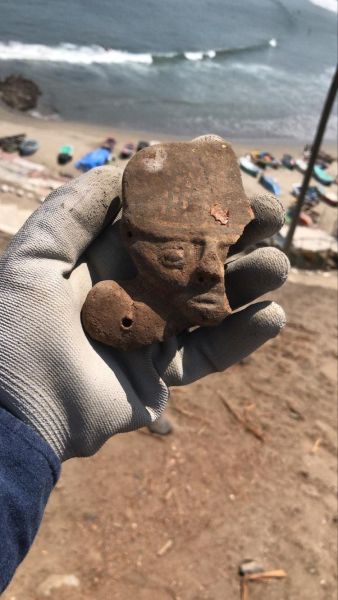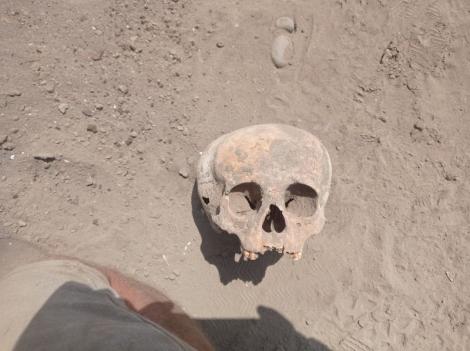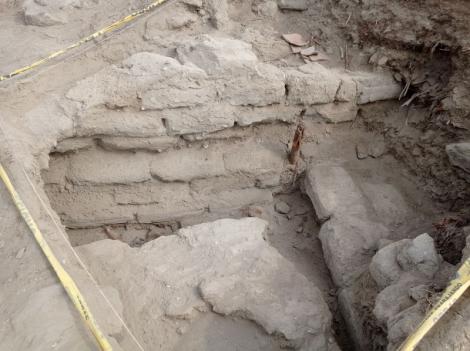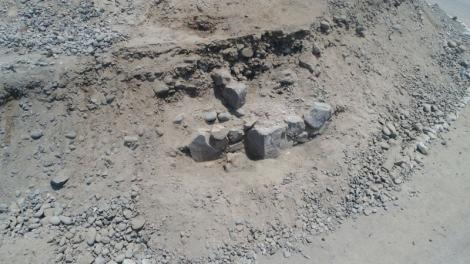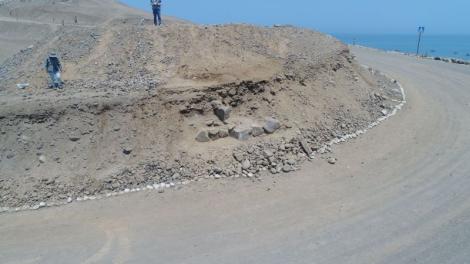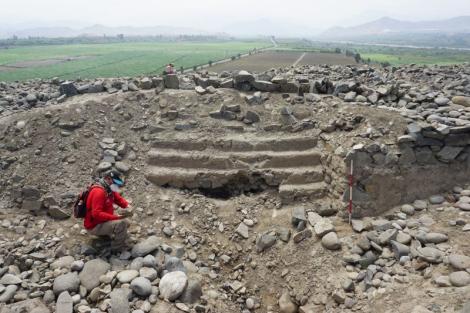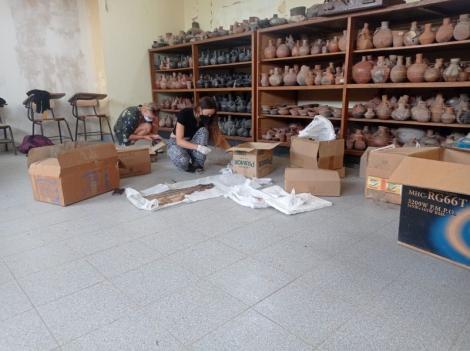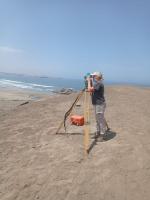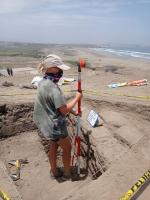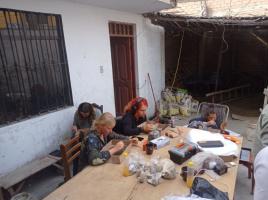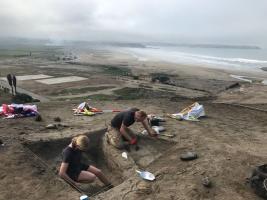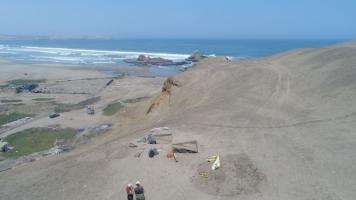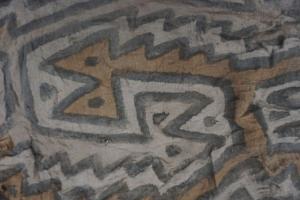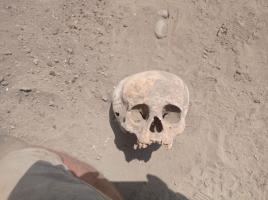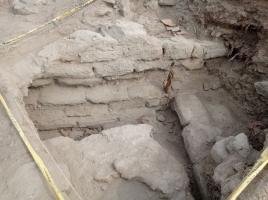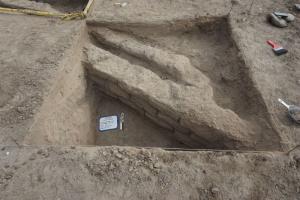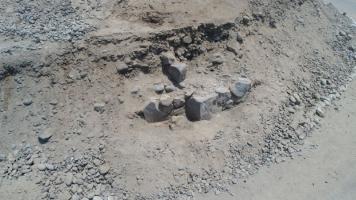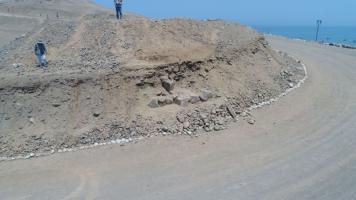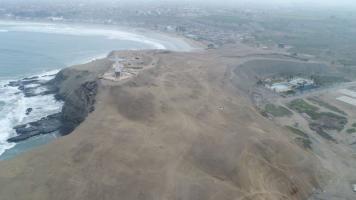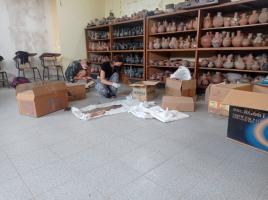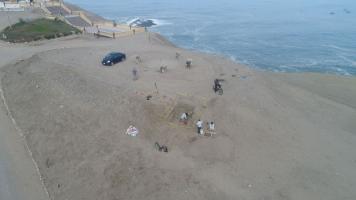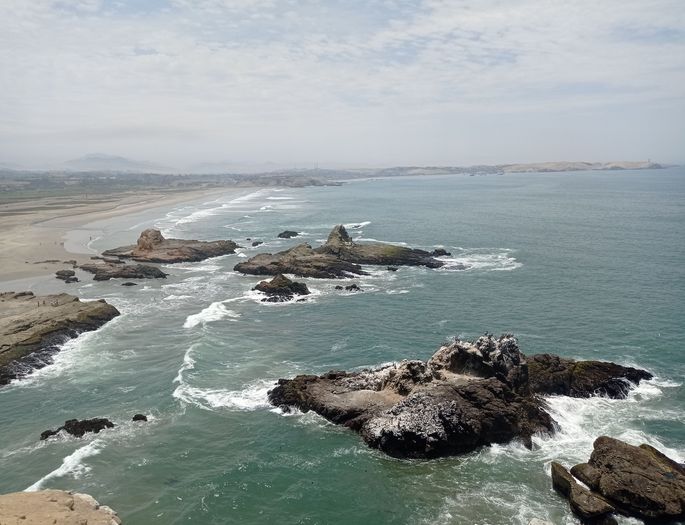
JU Institute of Archaeology students Bernardetta Bielecka, Maria Dyda, Róża Dziubińska, Emilia Kuzar and Alicja Łacheta took part in an archaeological study at the Cerro Colorado site, located about 200 kilometres north of Lima on the Peruvian coast. The project was carried out by an independent research group Programa de Investigación ‘Los valles de Barranca’.
Archaeologists investigated the remains of temples and burial grounds located on Cerro Colorado hill near the town of Barranca, where four mounds cover the remains of monuments built from adobe bricks. JU students participated in unearthing the foundations of a temple erected on the top of the hill as well as a grave holding the body of a child with a deformed skull. The grave was destroyed several decades ago; however, it still contained a unique fabric with painted depictions of animals, which measured more than three metres in length. They also discovered the remains of a corner wall of a much older structure. Radiocarbon dating carried out at the Poznan Radiocarbon Laboratory allowed researchers to estimate that the oldest temple on that site can be dated back to 2470–2206 BCE, while the newer one along with the child’s grave was built around 772–989 BCE.
JU students actively participated in discovering, documenting and further processing of found items. They took part in field prospection in the Pativilca valley, where they performed a photogrammetry survey using a drone. They visited a number of private collections containing previously unknown artefacts from local burial grounds and took part in an analysis of human remains found by Luis Miranda Munoz.
‘This research is particularly important for two reasons. Firstly, we were able to acquire materials for radiocarbon dating in this region. Secondly, the oldest layers of Cerro Colorado cover architecture dating back to the third millennium BCE. This means we’re dealing with the oldest examples of monumental architecture in the New World. These relics are often classified as belonging to what is called the preceramic period. It is still up for debate whether Peruvian coastal communities were hierarchical in nature. Our colleagues’ research could bring us new information about that’, said Prof. Jarosław Źrałka, Prof. UJ, head of the Department of New World Archaeology and research supervisor of the students participating in the project.
The research group Programa de Investigación ‘Los valles de Barranca’ is led by Peruvian archaeologist Plinio Guillen Alarcón. He co-founded the group together with Kraków bioarchaeologist Łukasz Majchrzak, who graduated from the Jagiellonian University. Researchers plan to continue their study in April and May of this year, again with the participation of JU students. This time, they will focus on improving their skills in 3D documentation of sites and heritage sites. The data they will collect will form a basis for their Master’s theses.



